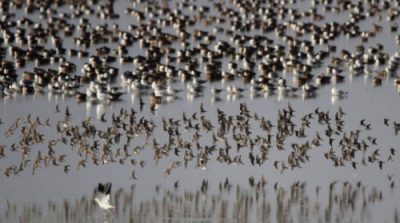
I confess: I am a lister. I like seeing as many species as possible on my life list, year list, state list, patch list, any kind of list. So when each year begins, the first place I think of visiting is Lago de Cuitzeo (Cuitzeo Lake). For my state of Michoacán in central Mexico, Lago de Cuitzeo is an unusually poor site for our specialty, which is west-Mexico-only endemics. But even in summer I can usually count on 60+ non-endemic species per visit, and in winter, a decent effort can usually result in 80 or more species.
That is because Lago de Cuitzeo receives a huge number of migratory waterfowl and shorebirds, with smaller numbers of sparrows, buntings, and other migratory birds in the areas around the lake’s shore. Not only are the species numbers good, but the spectacle of so, so many individual birds can be thrilling. Just from the two roads (one toll, one free) that cross the lake, and a small part of its total shore, on a good day in December or January you can count on seeing thousands of Northern Shovelers, Northern Pintails, and Yellow-headed Blackbirds. You will see hundreds of Green-winged and Blue-winged Teals, Western and Least Sandpipers, White Pelicans, American Avocets, Black-necked Stilts, Great and Snowy Egrets, White-faced Ibises, Ring-billed Gulls, and Caspian Terns. In somewhat smaller numbers, you can count on seeing resident Fulvous Whistling-Ducks, Mexican and Ruddy Ducks, Cinnamon Teals, American Coots, Common Gallinules, Clark’s Grebes, Tricolored and Little Blue Herons, Northern Jacanas, and Long-billed Dowitchers, as well as migratory Gadwalls, American Wigeons, Redheads, Semipalmated and Snowy Plovers, Wilson’s Snipes and Phalaropes, Greater and Lesser Yellowlegs, Laughing Gulls and Forster’s Terns, Great Blue Herons, and Black-crowned Night Herons. Get lucky, and you may see Canvasbacks, American and Least Bitterns, a Peregrine Falcon, a Northern Harrier or two, and Soras, as well as Chihuahuan Ravens and Cactus Wrens on the lake’s north shore. The endemic Aztec Rail is fairly easy to see if you know where to look (just below the sewage treatment area of the town of Cuitzeo), but you have to get really lucky to see our hyper-endemic Black-polled Yellowthroat or the White-throated Flycatcher here. In September, the lake fills with thousands of Baird’s Sandpipers and Wilson’s Phalaropes on their way south.
I could mention more waterfowl and shorebirds that can be seen, but a few are too common to mention, and many more are highly irregular sightings. And I imagine you stopped reading the above list halfway through, anyway. So I will just let the following pictures do the talking:
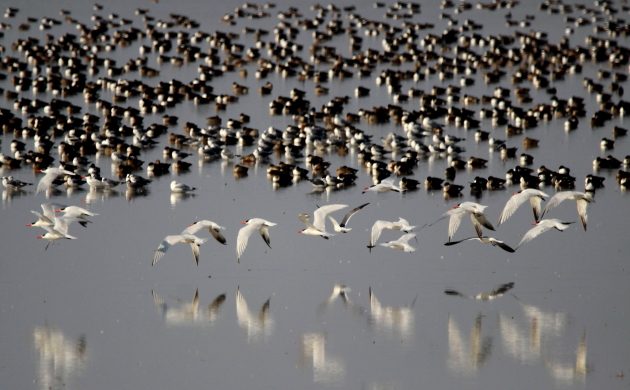 Caspian Terns fly by mixed gulls and just one part of a huge crowd of Shovelers.
Caspian Terns fly by mixed gulls and just one part of a huge crowd of Shovelers.
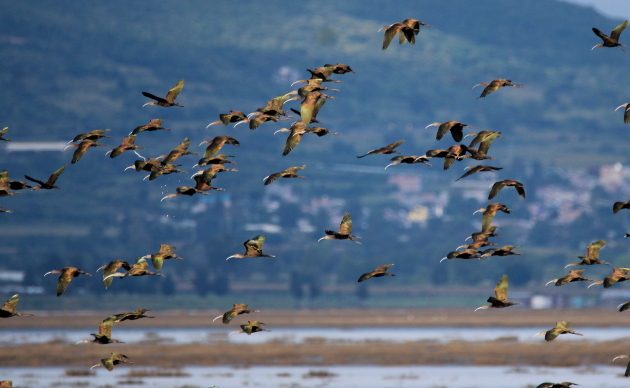 You will get tired of seeing White-faced Ibises.
You will get tired of seeing White-faced Ibises.
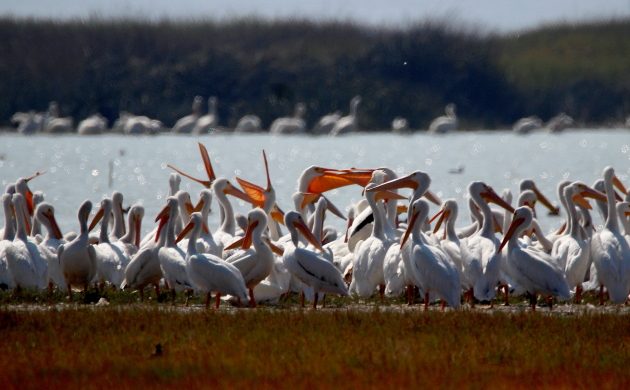 The same could be said of the White Pelicans, but Pelicans are just too amusing.
The same could be said of the White Pelicans, but Pelicans are just too amusing.
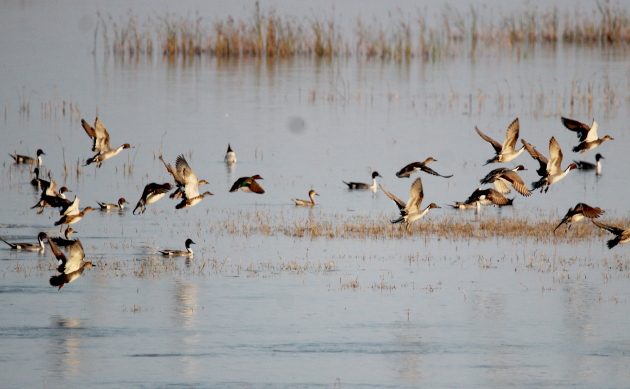 Northern Shovelers, and just one Green-winged Teal.
Northern Shovelers, and just one Green-winged Teal.
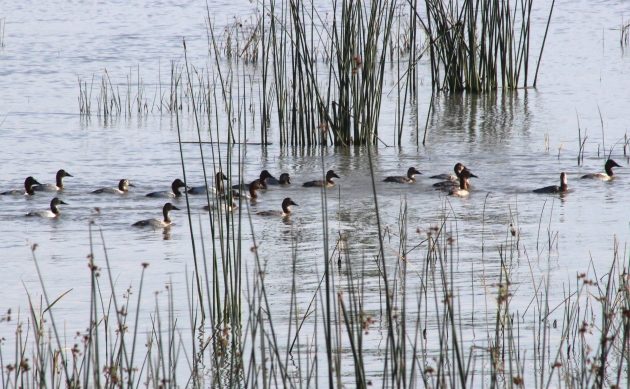 Only once did I see a large group of Canvasbacks at Cuitzeo.
Only once did I see a large group of Canvasbacks at Cuitzeo.
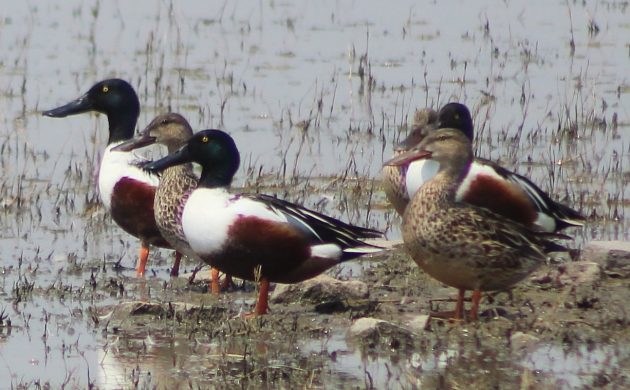 But the Shovelers surpass my counting abilities.
But the Shovelers surpass my counting abilities.
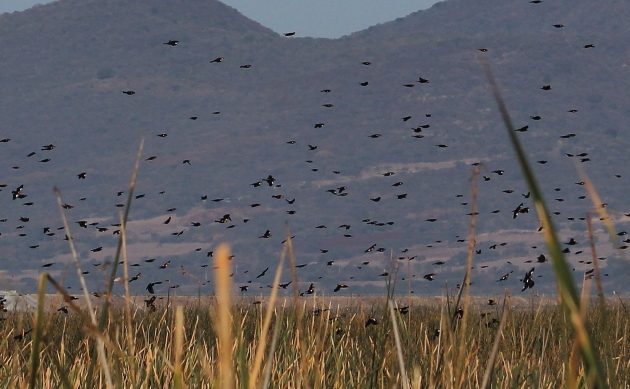 Which can also be said for the Yellow-headed Blackbirds. Red-headed Blackbirds are much less common in Lago de Cuitzeo.
Which can also be said for the Yellow-headed Blackbirds. Red-headed Blackbirds are much less common in Lago de Cuitzeo.
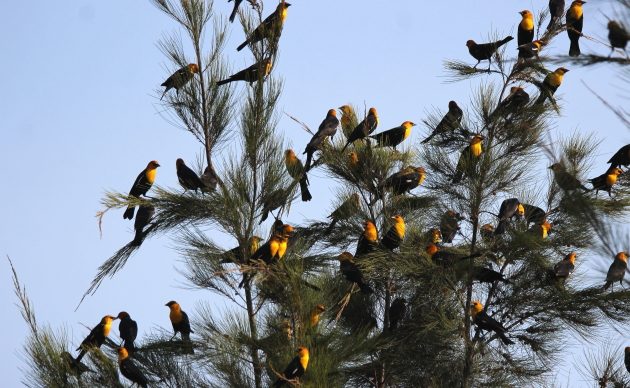 Here’s a closeup, because, Yellow-headed Blackbirds.
Here’s a closeup, because, Yellow-headed Blackbirds.
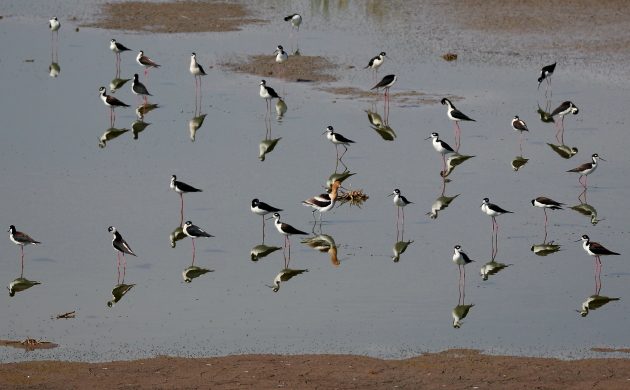 One of these shorebirds is not like the others!
One of these shorebirds is not like the others!
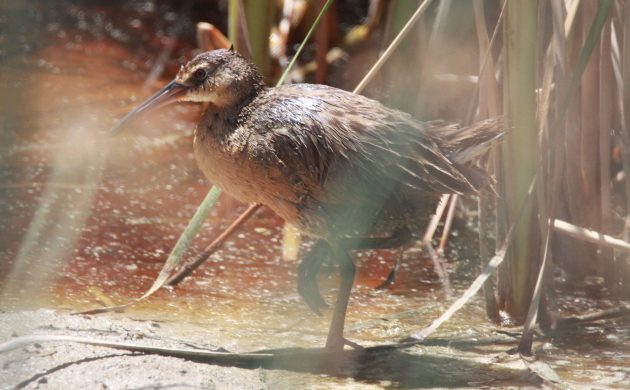 And, finally, an endemic: the Aztec Rail is often seen, but I have yet to catch it in the open.
And, finally, an endemic: the Aztec Rail is often seen, but I have yet to catch it in the open.
Now, I do hope you have stayed with me to this point, because there is a moral to this story:
How much do you like your ducks, grebes, sandpipers, and plovers? Perhaps you like them enough to have supported legislation protecting wetlands in the United States and Canada. You may even have donated to organizations supporting wetland preservation there.
But your waterfowl and shorebirds only spend half of each year in these two countries. In the case of birds that breed in the Arctic, they may only spend a fourth of the year up north. So, in many cases, their survival depends at least as much on the qualities of wetlands in Latin America.
Lago de Cuitzeo, which hosts hundreds of thousands of birds each winter, suffers from water overuse by agriculture, insufficient sewage treatment, and unplanned development. The lake’s shallower western half, on which dabbling ducks and shorebirds depend the most, is seriously affected by fluctuating water levels. In 2017 I made my annual January pilgrimage to get my first Cuitzeo sightings, only to discover that this half of the lake was completely dry. To this day, I do not know where all those birds spent the second half of that winter season.
If you love your ducks and peeps enough to contribute to conservation organizations, why not check first whether these organizations are working to protect wetlands south of the United States borders? Indeed, you should do the same when giving to any organization protecting birds, since your favorite warblers and orioles depend as much on Latin American forest as they do on those surrounding your home up north.
To the best of my knowledge, Ducks Unlimited is the one American organization working to protect the wetlands of Lago de Cuitzeo. But a quick internet study will reveal a good number of other such organizations working in other winter-migratory habitats in Latin America.













Shocked and appalled that nobody has made a Holden Caulfield joke yet …
I’m shocked and appalled that I don’t understand your comment! I’m pretty sure I had to read Catcher in the Rye in high school, but only remember the very sullen tone. And, that was some 45 years ago…
Got it! The ducks in Central Park…